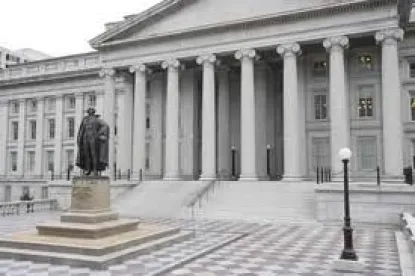The US Treasury released Final Regulations providing guidance under Subchapter Z (the Opportunity Zone Provisions) of the Internal Revenue Code in December of 2019. The Final Regulations clarify many portions of two earlier sets of proposed regulations released in October of 2018 and April of 2019, and contain numerous provisions that are likely to benefit investors in Qualified Opportunity Zones.
IN DEPTH
On December 19, 2019, the US Treasury (Treasury) released Final Regulations (the Final Regulations), providing guidance under Subchapter Z (the Opportunity Zone Provisions) of the Internal Revenue Code (the Code). The Final Regulations clarify many portions of two earlier sets of proposed regulations released in October of 2018 and April of 2019 (together, the Proposed Regulations). The Final Regulations contain numerous provisions that are likely to benefit investors in Qualified Opportunity Zones (QOZ) because the Final Regulations remove many lingering uncertainties. However, in some instances the Final Regulations provide some unwelcome news. Rather than walking through the mechanics of the Final Regulations, this article details what we consider to be the most important takeaways particularly in areas where the guidance departs from the Proposed Regulations.
Background:
The Tax Cuts and Jobs Act of 2017 introduced the Opportunity Zone Provisions as an incentive to encourage investment in designated low-income communities. The Opportunity Zone Provisions allow taxpayers to defer tax on capital gains that are reinvested in a “qualified opportunity fund” (QOF), potentially reduce by up to 15% the tax on their initial capital gain, and eliminate the tax on appreciation in their eligible interest in the QOF after holding it for at least 10 years.
A QOZ is an eligible low-income census tract that is designated by the governor of the state or territory in which it is located as a QOZ and certified by Treasury. Under the Opportunity Zone Provisions, taxpayers may qualify for some or all of the tax benefits listed above by investing eligible gains in a QOF, generally, within 180 days of recognition.
A QOF is an entity organized as a corporation or partnership for the purpose of investing in “qualified opportunity zone property” (QOZ property) and that holds at least 90% of its assets in QOZ property (the 90% Asset Test). QOZ property includes “qualified opportunity zone stock” (QOZ stock), “qualified opportunity zone partnership interests” (QOZ partnership interests), and “qualified opportunity zone business property” (QOZB property). Whether a fund meets the 90% Asset Test is determined by calculating the average percentage of QOZ property held by the fund as measured at six-month intervals.
In practice, virtually all QOFs invest in either QOZ stock or QOZ partnership interests. QOZ stock and QOZ partnership interests are defined as stock or interests in an entity that is a “qualified opportunity zone business” (QOZB). In order to be considered a QOZB, substantially all of the tangible property owned or leased by the entity must be QOZB property. For this purpose, the Proposed Regulations clarified that the threshold for substantially all is 70%, and the Final Regulations formalize this in the “70% Tangible Property Test.” Moreover, a QOZB is required to meet the following additional requirements: (1) at least 50% of the total QOZB’s gross income be derived from active conduct of its trade or business, (2) at least 40% of the QOZB’s intangible property be used in the business, (3) less than 5% of the average of the aggregate unadjusted bases of the QOZB’s property is attributable to nonqualified financial property and (4) the QOZB cannot be used to provide any private or commercial golf course, country club, massage parlor, hot tub facility, suntan facility, racetrack or other facility used for gambling, or any store the principal business of which is the sale of alcoholic beverages for consumption off the premises.
QOZB property must meet four criteria: (1) it must be used in a trade or business of a QOF or QOZB (an “eligible entity”) (2) the eligible entity must acquire the property by purchase after December 31, 2017, (3) the property must either be originally used by the eligible entity in the QOZ or substantially improved by the eligible entity and (4) during substantially all of the holding period of the property, substantially all of its use must be in a QOZ.
This basic framework was clarified by both sets of Proposed Regulations. However, the Proposed Regulations left several questions open and it was unclear the extent that certain taxpayers could benefit from investing in QOFs. The Final Regulations have in large part answered these questions, generally in a taxpayer-friendly manner. The Final Regulations will be viewed favorably by many taxpayers. We commend Treasury and the IRS for their thoughtful approach to these regulations and substantial work to implement the QOZ provisions generally.
Highlights:
-
Clarification of Eligible Gains: The Final Regulations mirror the Proposed Regulations in requiring a taxpayer to invest “eligible gains” in order to benefit from investing in a QOF. Generally, both the Final and Proposed Regulations considered eligible gains to include those treated as capital gains for US federal income tax purposes. These include gains from the disposition of capital assets, gains from the disposition of Section 1231(b) property and other forms of income treated as capital gain under the Internal Revenue Code. Both long-term and short-term capital gain can be considered eligible gain. The Final Regulations clarify that eligible gain does not include recapture gain that is treated as ordinary income under Section 1245(a) or Section 1231(c). In what will be a favorable decision for many taxpayers, Treasury clarified that capital gain can be invested even if the taxpayer has offsetting capital losses. This has a major impact on Section 1231 gains, which, ordinarily, would only be determined at year-end when Section 1231 gains are netted against Section 1231 losses. Indeed, the proposed regulations utilized this methodology. Instead, the Final Regulations clarify that Section 1231 gains are immediately available upon recognition as eligible gains to invest in a QOF and are not offset by Section 1231 losses for purposes of amounts contributed into a QOF. Thus, the 180-day period to invest in a QOF begins on the date of the sale or exchange that gives rise to the eligible Section 1231 gain. Moreover, because the invested Section 1231 gains are not netted against Section 1231 losses, these is a greater possibility that taxpayers could result in a Section 1231 loss position, which may be treated as an ordinary loss to the taxpayer. .
-
Application to Tax–Exempt and Foreign Investors: The Final Regulations generally provide that eligible gains only include those which are otherwise subject to US federal income tax. This position has significant consequences for tax-exempt and foreign investors who in certain circumstances may not be subject to US federal income tax. However, other foreign or tax-exempt investors will be able to benefit from the QOZ Provisions to the extent the investor generates capital gain that is subject to a federal income tax liability. For example, a tax-exempt entity which has capital gain attributable to unrelated business taxable income under Section 511 can generate eligible gains and benefit from investment in a QOF. Similarly, a foreign investor with capital gains that are effectively connected to a US trade or business could treat those gains as eligible gains. The Final Regulations further provide that the QOZ provisions are not considered nonrecognition provisions for purposes of withholding under the Foreign Investment in Real Property Tax Act (FIRPTA). Therefore, a foreign investor who plans to reinvest gains subject to FIRPTA into a QOF will still be subject to the 15% withholding at the time they dispose of an interest in US real property. The Final Regulations are also silent as to whether the amount of withholding may be reduced under 1446(f) for a sale by a foreign investor of a US partnership interest. It is debatable whether these provisions will further the underlying goal of the QOZ Provisions, which is encouraging investment in low-income communities. Foreign investment constitutes a large portion of investment in US real estate, and many foreign investors have limited US federal tax liabilities. Therefore, the Final Regulations appear to limit their incentive to invest in a QOZ rather than in a more economically advantaged census tract.
-
Timing for Election: In order to benefit from the QOZ provisions taxpayers are required to invest their eligible gains within 180 days of the date that the taxpayer would recognize the gain. Prior to the Proposed and Final Regulations, there was some question regarding how this 180-day period should be calculated in circumstances where taxpayers may not have ready access to all of the information pertaining to their gain. The Final Regulations provide generally helpful clarifications for calculating this 180-day investment window for RIC/REIT capital gain dividends, installment sale gains, and gains from pass-through investments. In the case of RIC/REIT capital gain dividends, the 180-day period begins at the end of the shareholder’s taxable year in which the gain would be recognized or, if the taxpayer elects, from the date the capital gain dividend is actually paid. Similarly, the 180-day period for installment sale gains may be calculated from either the date a payment is received or the last day of the taxable year when the eligible gain would otherwise be recognized. Importantly, installment sale gains recognized in 2018 or later from a sale transaction that occurred prior to 2018 are eligible gains that may be invested into a QOF.
The Final Regulations also clarify the beginning of the 180-day period for gains derived from pass-through investment. Under the Proposed Regulations, the taxpayer could elect to begin the 180-day period on the date of the transaction of the entity, giving rise to the gain or on the last day of the pass-through entity’s taxable year. The Final Regulations allow taxpayers to begin the 180-day period on the due date of the entity’s tax return. This seemingly small change will be a large comfort to partners concerned that they would not have the requisite information to determine whether certain gains were eligible prior to the entity filing its return. However, this provision is limited by the fact that it does not include any extensions of the return’s due date.
-
Treatment of Vacant Property: Property must either be originally used by an eligible entity in a QOZ or substantially improved by the eligible entity in order to qualify as QOZB property. The Proposed Regulations introduced a limited carve out where otherwise vacant property could meet the original use standard. The Final Regulations clarify how to determine and expand on whether property is vacant. The Final Regulations begin by defining the term vacant as “significantly unused.” A building or land is considered significantly unused if more than 80% of its usable space is idle. The Final Regulations also reduce the amount of time property must be vacant in order to be treated as originally used by the eligible entity in the QOZ to one year where the property is vacant at the time that the QOZ was so designated or three years where the property was not vacant at such time (down from five in the Proposed Regulations). The Final Regulations further provide buildings located on Brownfield sites qualify as original use property, and that remediation of contaminated land is taken into account in determining whether the land has been minimally improved. However, the Final Regulations couple this provision with a requirement that taxpayers invest in the site to ensure that it meets certain safety standards. Portions of the Final Regulations concerning vacant property appear to have taken the view that the benefit of encouraging greater and potentially riskier investment in QOZs outweighs the possibility that property owners might leave property vacant for a period of time in order to lure investors seeking the benefits of the Opportunity Zone Provisions.
-
Substantial Improvements: The Final Regulations provide clarity when determining whether properties comprised of multiple buildings have been substantially improved and thus may be counted as QOZB property. The Final Regulations allow aggregation of buildings in order to treat them as a single unit of property in certain circumstances. The Final Regulations allow for grouping buildings that are located entirely within a single parcel of land, or are located on contiguous parcels. Buildings located on contiguous parcels may only be grouped if: (1) they are operated as part of one or more trades or businesses exclusively by the eligible entity; (2) they share facilities or centralized business elements (such as personnel, accounting, legal, manufacturing, purchasing, human resources or information technology resources); and (3) they are operated in coordination with, or reliance upon, one or more of the trades or businesses (for example, supply chain interdependencies or mixed-use facilities). While these provisions appear favorable, they do not include detailed examples beyond the above parentheticals, therefore questions are likely to arise at the margins.
-
Triple Net Leasing: The Proposed Regulations adopted the definition of “trade or business” from Section 162, with one significant modification solely for purposes of Subchapter Z. Specifically, the Final Regulations, like the proposed regulations, provide that rental activity would constitute a trade or business with the exception that entering into a triple-net-lease did not by itself constitute a trade or business. This left open the possibility that entering into a triple-net-lease could qualify as a trade or business if coupled with additional activity to meet the Section 162 definition. The Final Regulations provide examples in an effort to both define “triple-net-lease” and delineate when such leases fail to constitute the active conduct of a trade or business. The Preamble further indicates the intent to define a triple-net-lease as “as a lease arrangement pursuant to which the tenant is responsible for all of the costs relating to the leased property (for example, paying all taxes, insurance, and maintenance expenses) in addition to paying rent.” The example of a triple-net-lease qualifying as a trade or business involves a taxpayer who owns a three-story building. The taxpayer rents one floor to an unrelated party on a triple-net-lease basis and the other two floors to two other unrelated parties as non-triple-net-leases. The example concludes the entire building can be viewed as a trade or business for purposes of the Opportunity Zone Provisions. While helpful, this example does not provide much indication of how Treasury or the IRS would view a more complex situation. For instance a property owner whose properties are located in different areas, but share common administrative functions. To the extent that a taxpayer’s fact pattern deviates from the example, the taxpayer will need to turn to the case law under Section 162 for the definition of a trade or business.
-
Inventory: It was previously unclear how inventory would factor into the 90% Asset Test and 70% Tangible Property Test. The final Regulations provide taxpayers with flexible options for how to include inventory when determining compliance with both tests. A taxpayer may choose to include all inventory in the numerator and denominator when applying the tests or exclude the value of inventory entirely. Taxpayers are then required to apply their choice consistently. The choice of an all or nothing election maintains a degree of flexibility, but has the advantage of clarity, and administrability. With respect to the 70% Use Test, the Final Regulations also clarify the safe harbor for inventory in transit initially included in the Proposed Regulations. This safe harbor treats inventory in transit from a vendor to the taxpayer as being used in a QOZ. Moreover, it is now clear that this safe harbor applies regardless of the distance over which inventory is moved. Further, some of the ordinary needs of shipping inventory, for instance warehousing inventory for a short period of time, will not negate qualification for the safe harbor. These rules should allow eligible entities flexibility in structuring their supply chains pursuant to their business needs rather than the income tax regulations.
-
Step Transactions: Eligible gain can only arise from a taxable transaction with an unrelated party and QOZ property can only be acquired from an unrelated party. In response to public comments, the Preamble to the Final Regulations warns that a transaction whereby a taxpayer ostensibly recognizes gain from selling property to an unrelated QOF as part of a plan that involves reinvestment of the gain in the QOF may be recharacterized as a contribution of the property under circular cash flow or step transaction doctrine principals. For example, a scenario where a taxpayer sells land to an unrelated QOF with which they develop a working relationship and, seeking to defer recognition of gain on the sale, invests the capital gain in the same QOF may be subject to recharacterization depending on the specific facts. Similar rules apply where a taxpayer enters a transaction with a QOZB and seeks to reinvest gain in a related QOF. Notably, the Final Regulations themselves do not address this point. If correct, the position put forth by the Treasury in the Preamble would effectively eliminate from the statute the term “unrelated” from Section 1400Z-2(a)(1), much of the 20% threshold in Section 1400Z-2(e)(2), and ignore the existence of Section 707(a). If recharacterized as a contribution in the manner described in the Preamble, there would be significant repercussions to the remaining members of the QOF. For example, the deemed contributed property would not be qualifying QOZ property and could, thus, cause the entire QOZB to not meet its statutory requirements.
-
Working Capital Safe Harbor: QOZBs must adhere to the Section 1397C(b)(8) requirement (dealing with enterprise business zones) that less than 5% of the entity’s basis be attributable to nonqualified financial property (including cash). This requirement initially led to significant concern, as many QOZBs will necessarily be in the developmental stages with much cash on hand waiting to be spent. In order to assuage these concerns, the Proposed Regulations took account of taxpayers’ business needs and provided a 31-month safe harbor for cash, cash equivalents, and short-term debt held in connection with a written plan for development of the QOZB. The Final Regulations expand on the “working capital safe harbor” concept. Most importantly, they provide a 62-month cap where multiple working capital safe harbors apply to the same tangible property. These rules should encourage the development of more active business ventures within QOZs.
-
Installment Sales: The Final Regulations provide taxpayer friendly and flexible rules for installment sales. As referred to above, the Final Regulations allow taxpayers to choose between the date payment under an installment sale is received or the last day of the taxable year gain from an installment sale would otherwise be recognized in determining the 180-day period begins. In addition, the Final Regulations explicitly provide that eligible gain may include gains from installment sales which occurred before the effective date of the QOZ statutes (December 22, 2017). This portion of the Final Regulations allows an additional subset of capital access to the QOZ benefits.
-
Partnership Mergers: The Final Regulations permit QOF partnerships to merge without triggering an inclusion of gain deferred under the Opportunity Zone Provisions provided that the surviving partnership is itself a QOF. This clear-cut rule is consistent with the underlying policy of the QOZ provisions in that it will ensure continued investment in a QOZ while allowing QOFs to engage in normal structuring and growth.
-
Trusts and Estates & Gifts: The Final Regulations provide a number of rules in the Trusts and Estates context. For one, they clarify that Section 1014 does not apply upon the death of a QOF investor. Therefore, an inherited QOF investment’s basis is not adjusted to its fair market value upon the death of the decedent. The Final Regulations also provide that several transactions taking place at death or with a grantor trust of the investing taxpayer do not trigger an inclusion of the deferred gain. In the case of death, these include a transfer to a decedent’s estate, a distribution from a decedent’s estate, a distribution from a trust because of the decedent’s death, and the passing of a portion of a QOF investment to the surviving co-owner by operation of law (for instance in a community property state). In the case of a grantor trust they include gifts and other non-recognition events where the deemed owner of the trust continues to be the taxpayer, including transfers from the grantor trust to its owner. With respect to gifts, the Final Regulations clarify that benefits do not carryover to the gift recipient when a QOF is gifted. Even in the case of divorce, a recipient former spouse under Section 1041 is not able to obtain the benefits of a QOF investment, even if the taxpayers formally filed joint tax returns.
Conclusion:
The Final Regulations clarify many provisions of the Proposed Regulations and answer some previously open questions. Despite some unwelcome news, many of the provisions are likely to benefit investors in QOZs, and the Final Regulations taken as a whole may well further the goal of encouraging investment in low-income communities. This article seeks to highlight portions of the Final Regulations we found particularly important, and is not intended to be a comprehensive review of the entire regulatory package.






 />i
/>i

